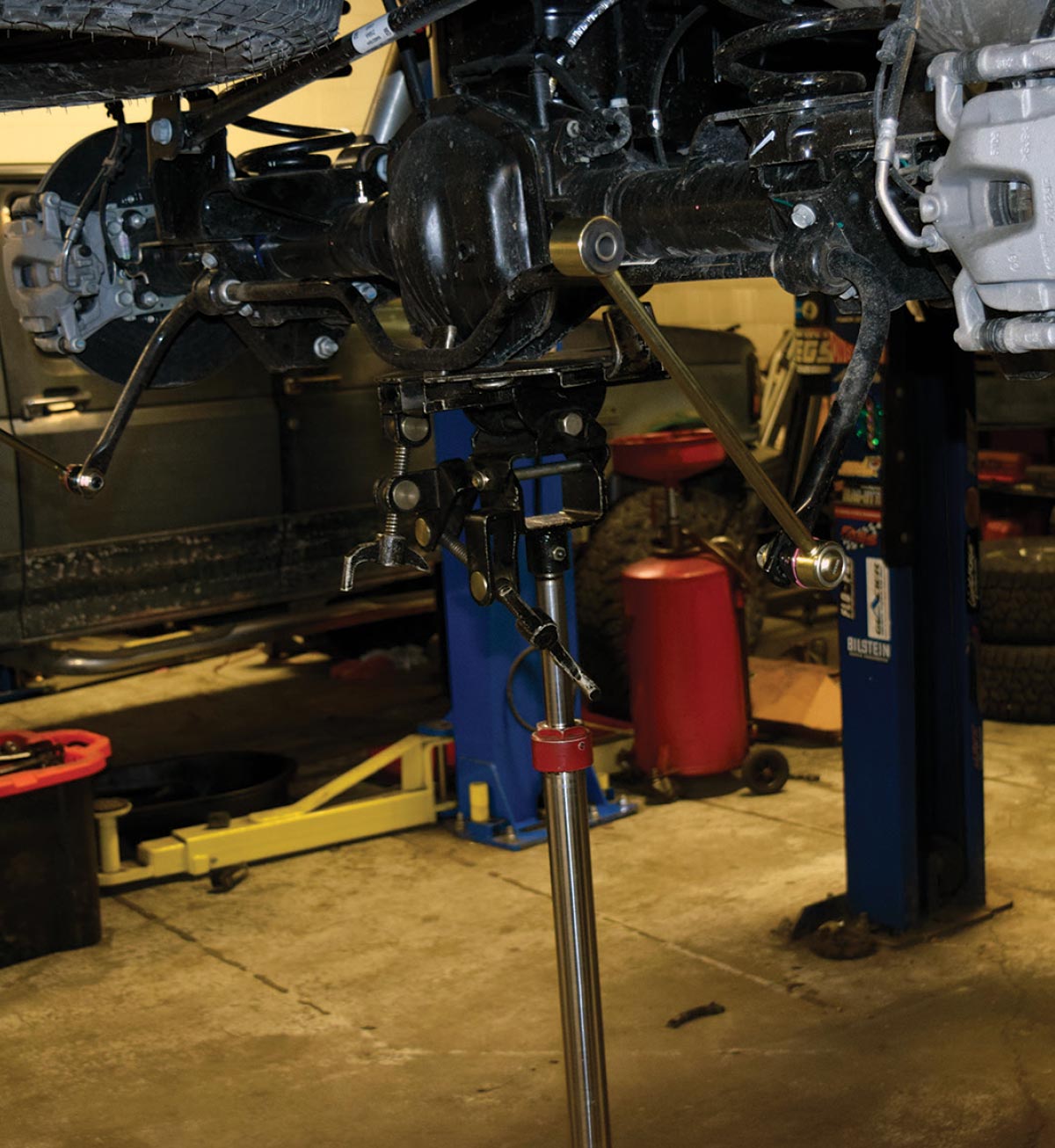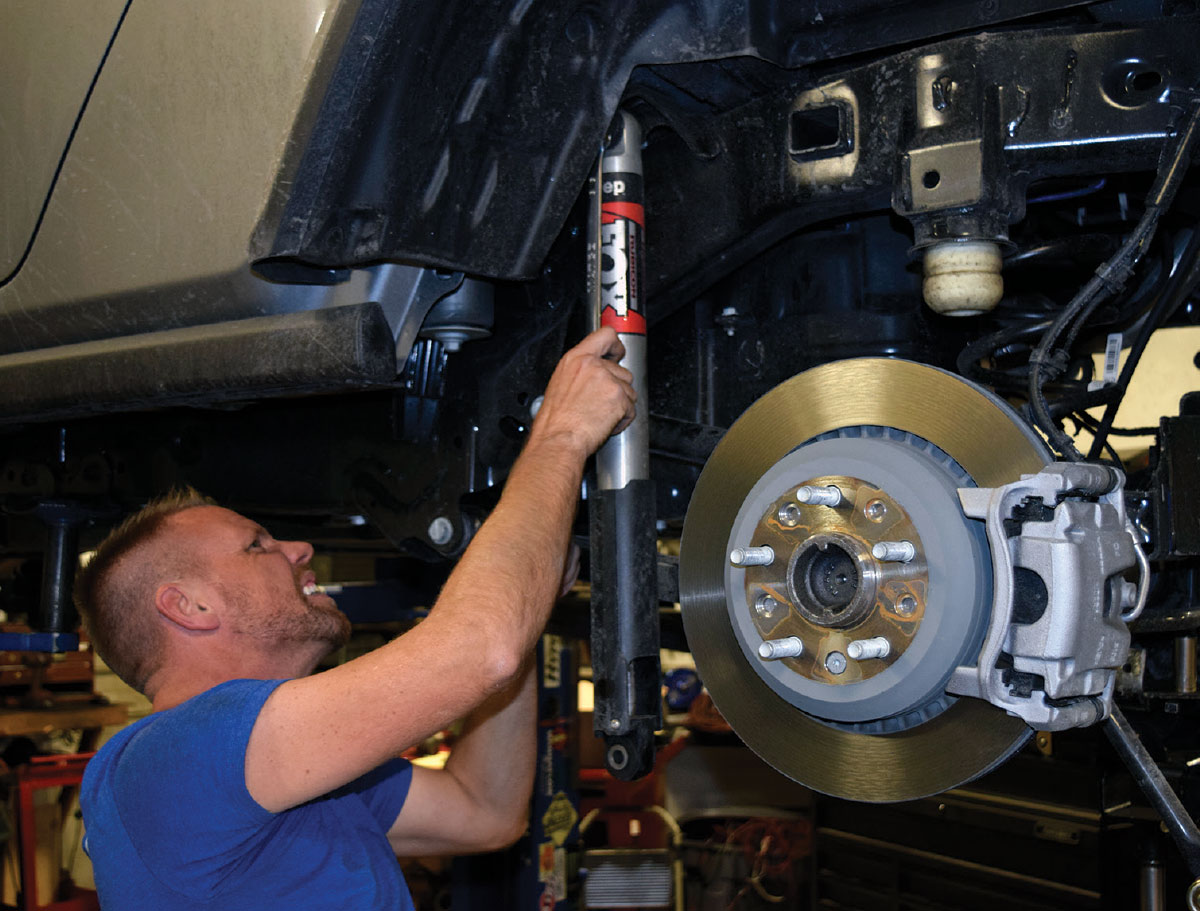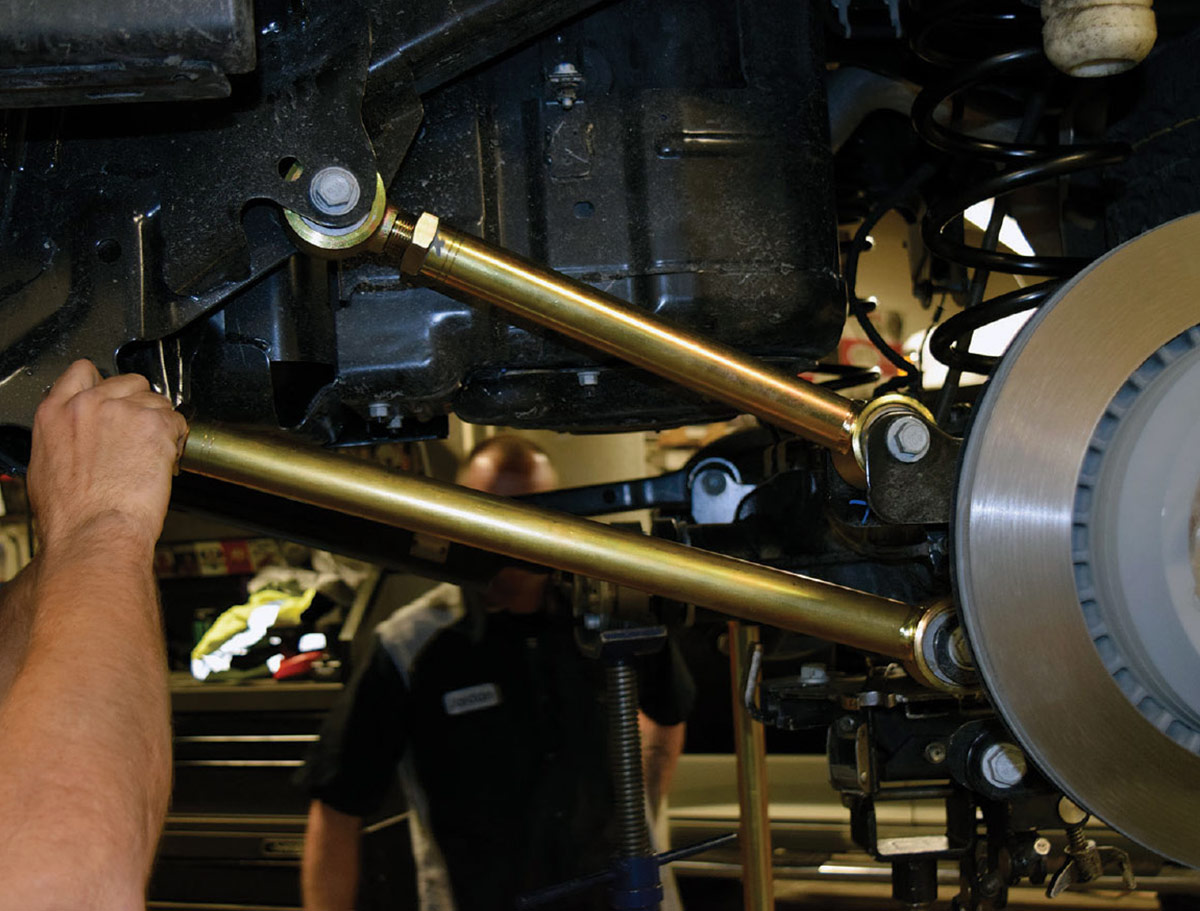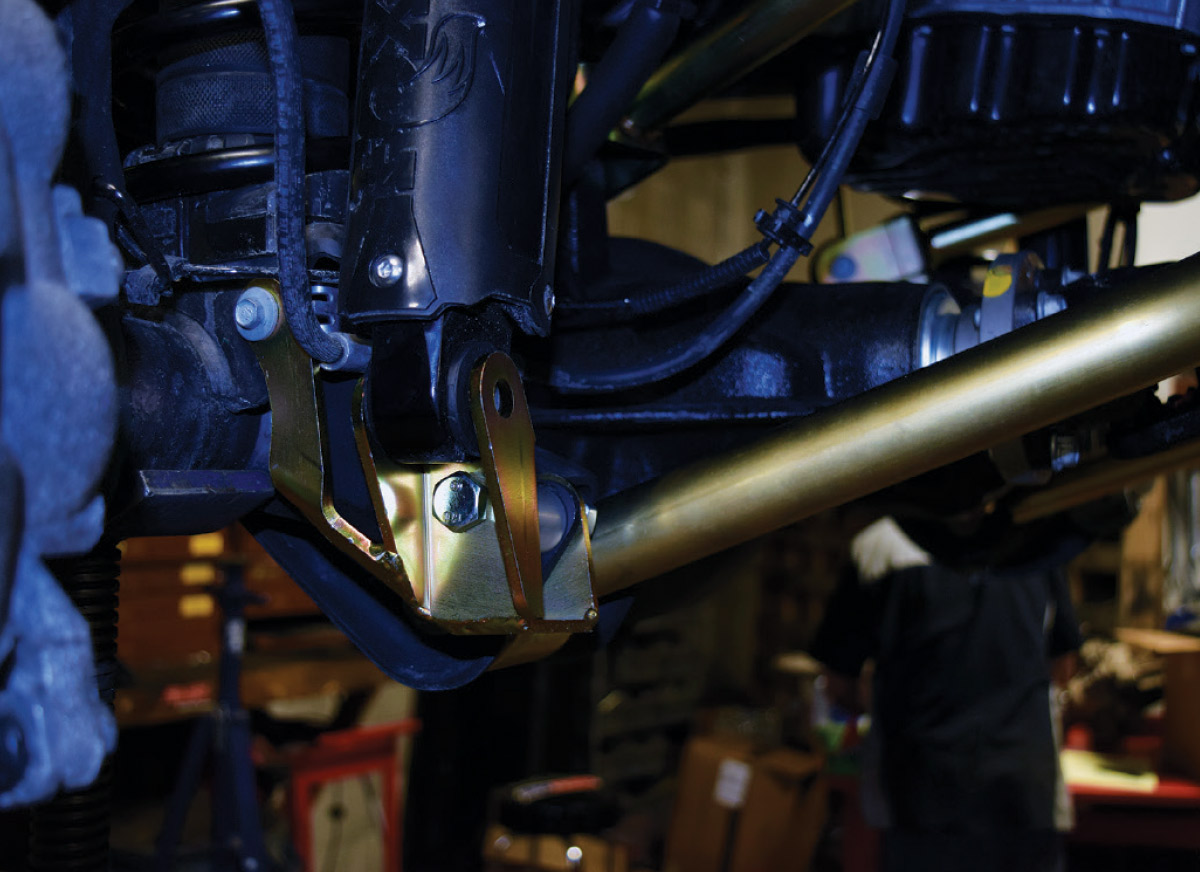


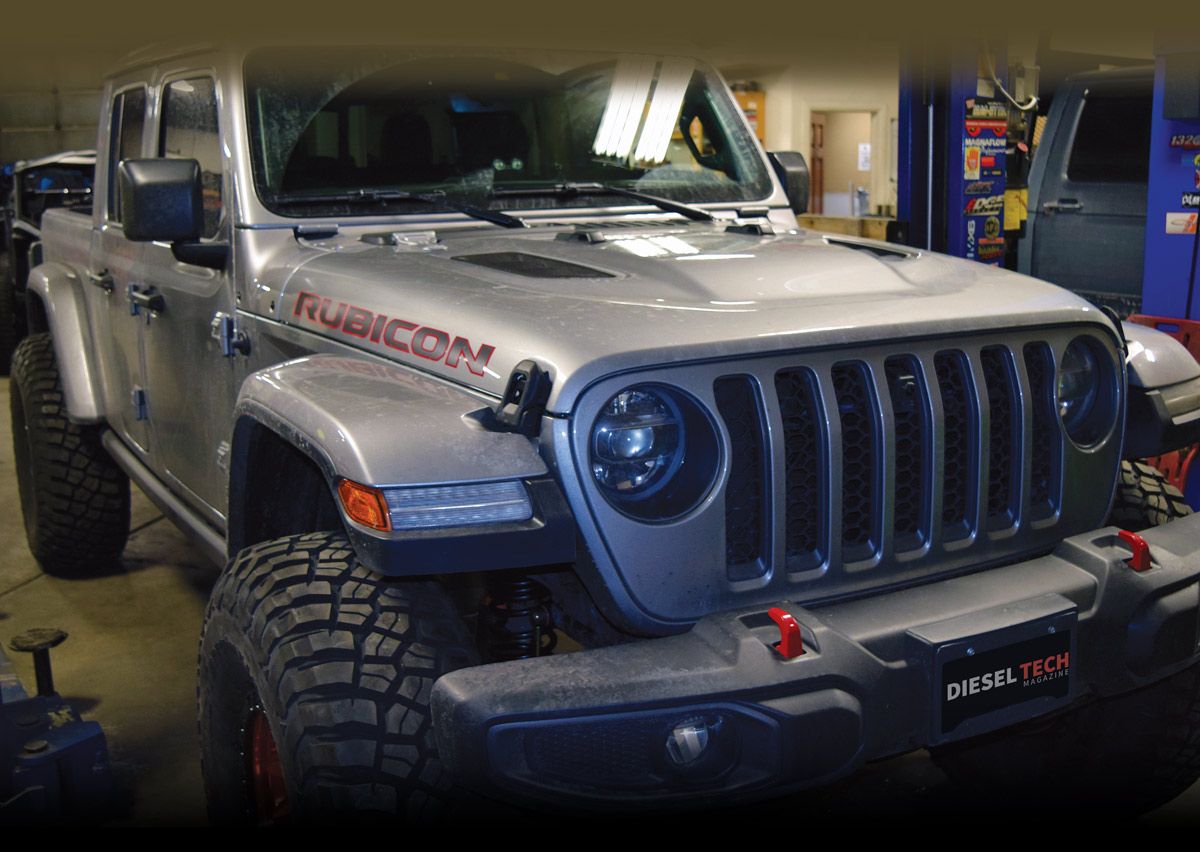
The suspension on Alan’s Jeep is Metalcloak’s top-of-the-line kit, featuring patented technology not available anywhere else that truly gives the premium off-road performance he deserves. The innovative kit was installed by technician Jordan Johnson at PowerTech Diesel in Idaho Falls with some help from Alan himself as well as other technicians in the shop.
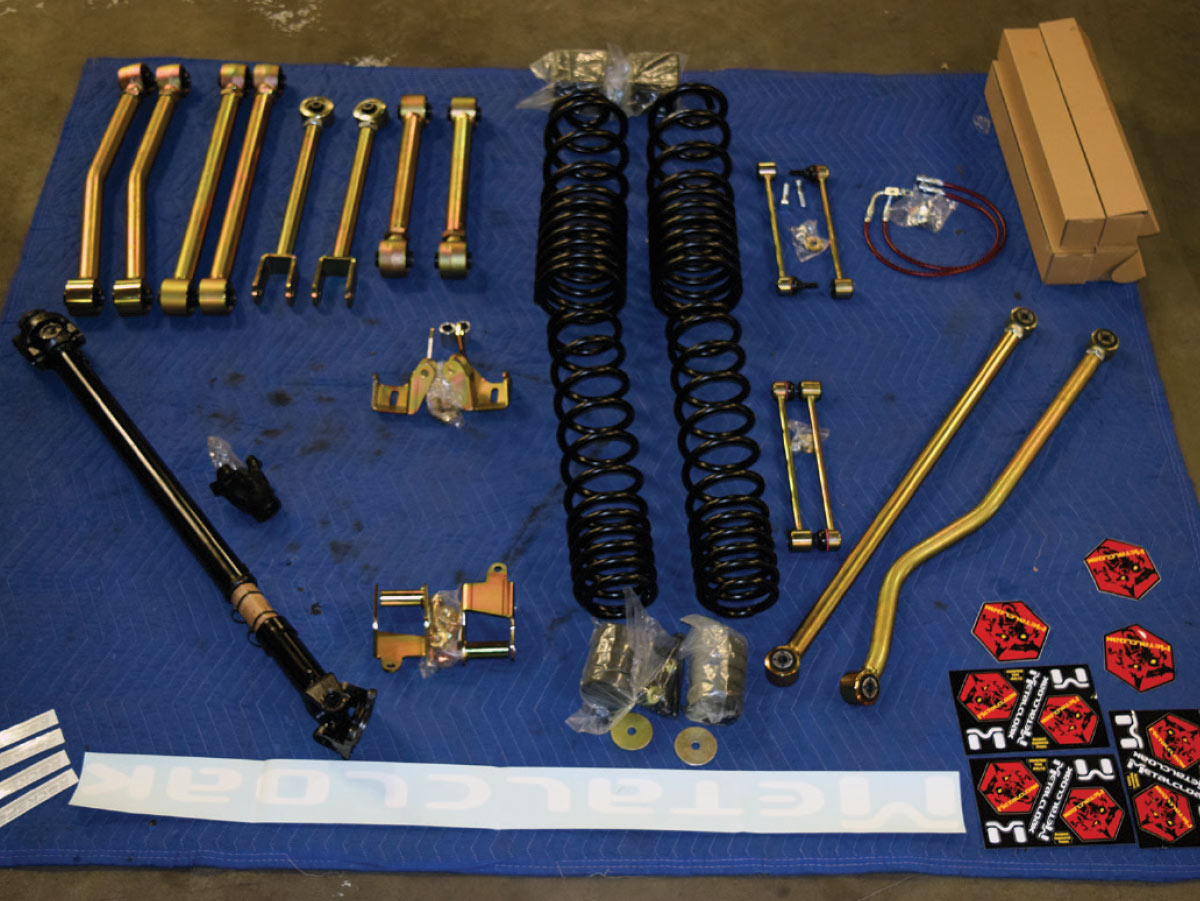
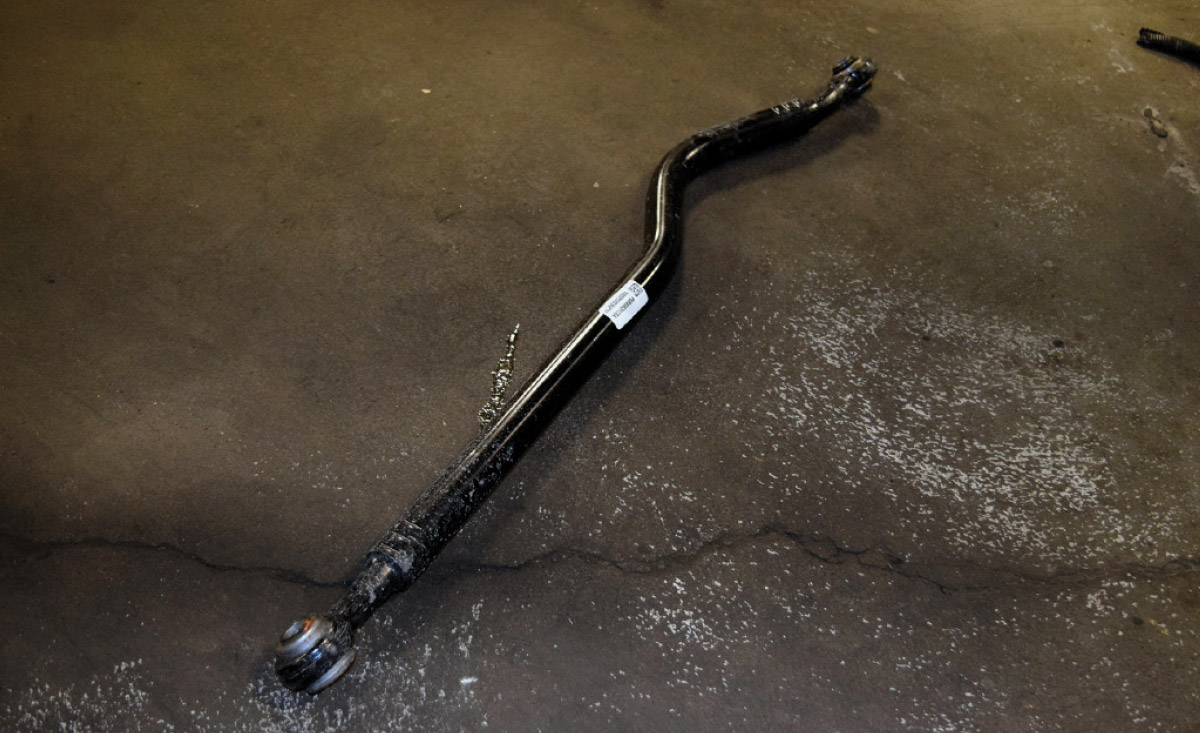
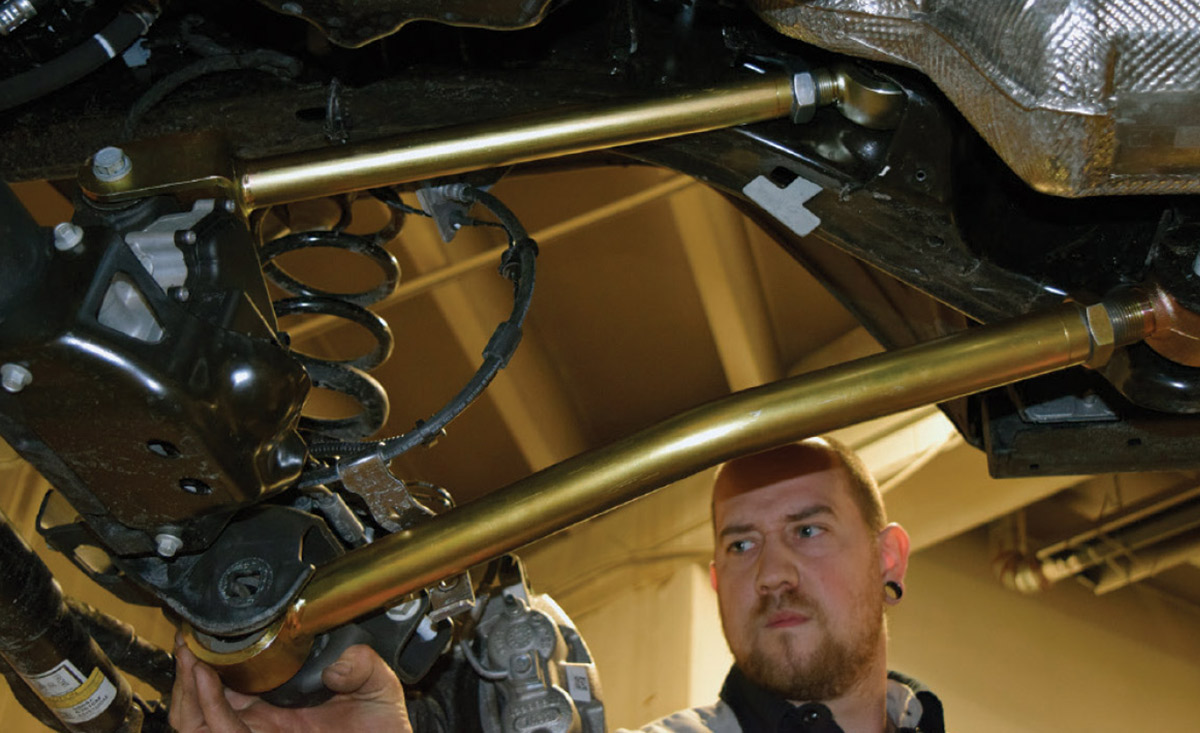
Unfortunately, the EcoDiesel’s diesel particulate filter (DPF) got in the way of the upper bolt on the upper radius arm, so the arm proved to be a challenge to pull off. However, after meddling with the DPF’s mounting bolts and figuring out a way to force it enough with a pry bar, the bolt finally came out of the hole and the arm came off. With both arms off, Jordan put the new replacements in place after measuring them. With help from technician Travis Prouse, he pushed the front axle forward to get the new lower arm in place to insert the bolt. With those in place, he removed the old coil spring and reinstalled the shock to temporarily hold the axle in place. The radius arm installation process was repeated for the driver side, and the DPF mounting bolts reinstalled.


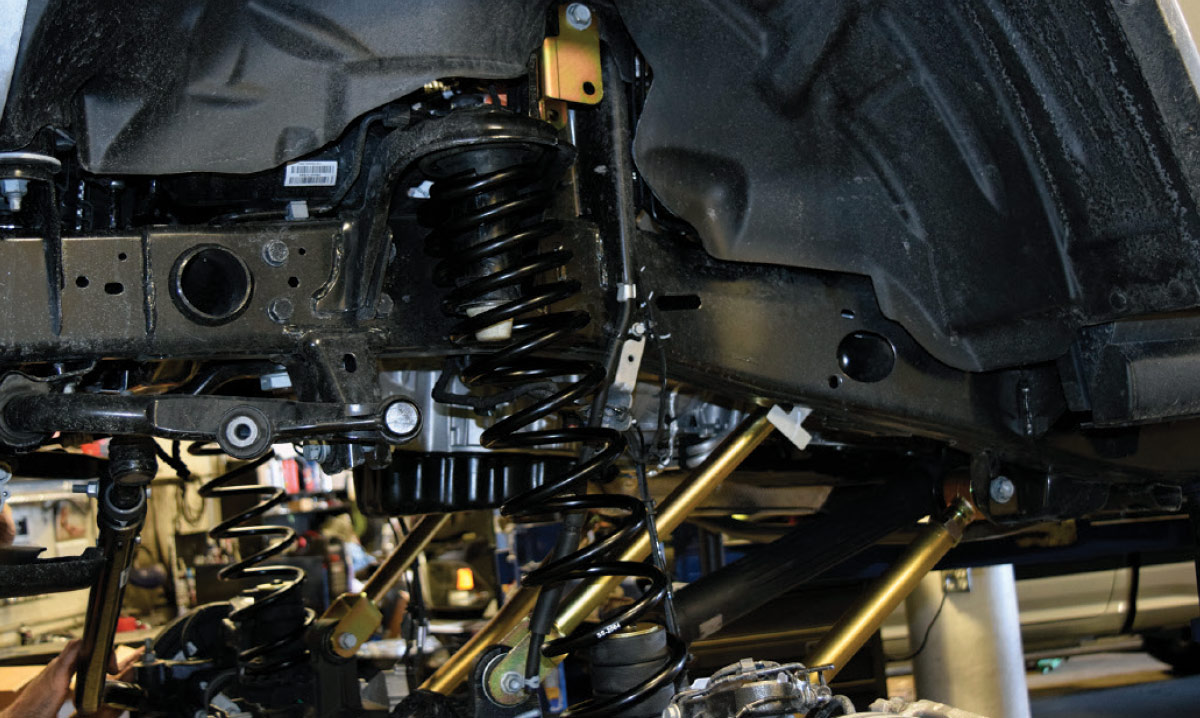
Jordan hooked in the new sway bar end links while Alan tightened up loose nuts and bolts around the front end. “Remember to mark the nuts and bolts with red ink,” Alan says. “It’s to show if anything is loose.”
He left the stock upper brake line brackets on and reinstalled those. The front end side of the suspension was now complete.
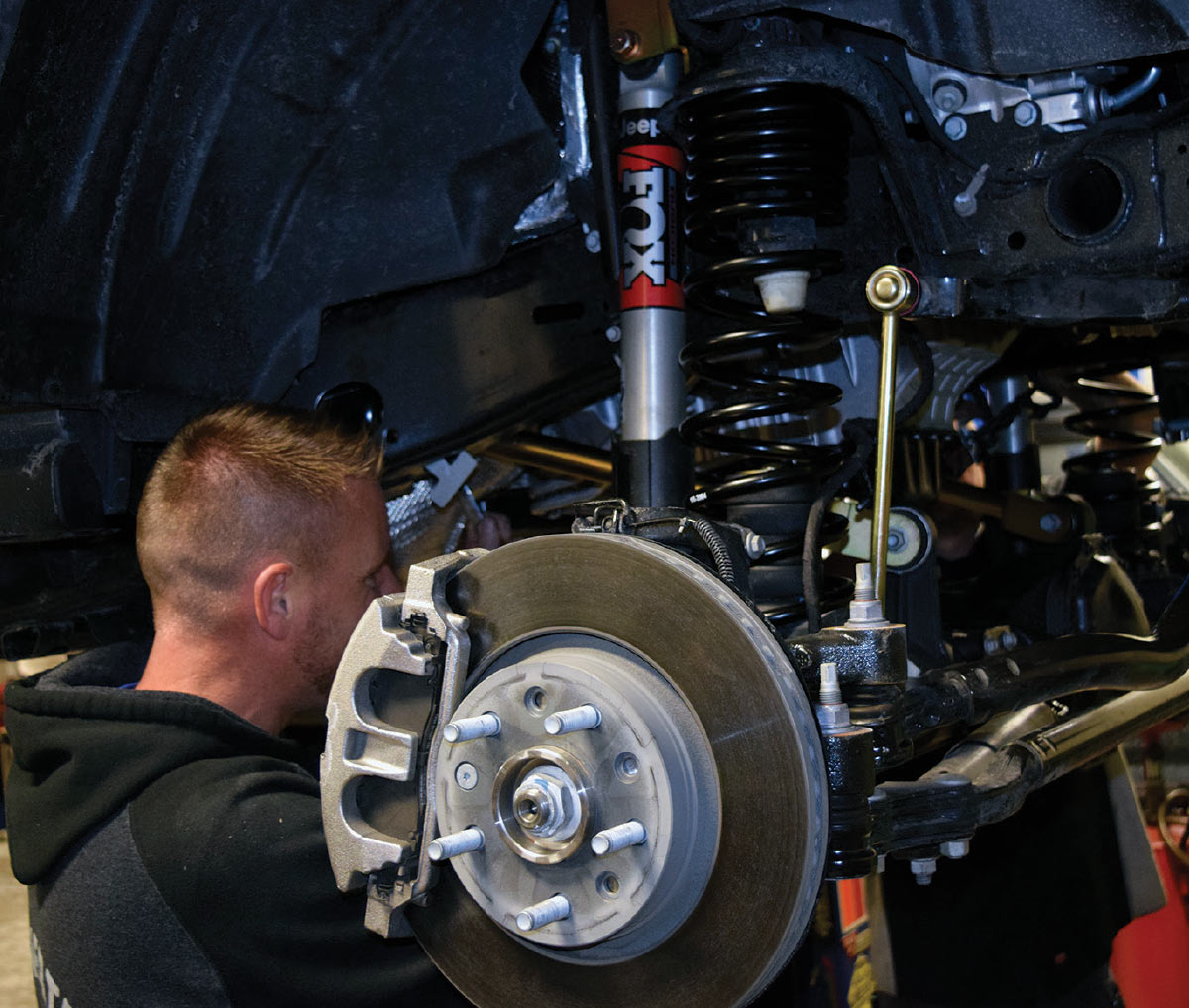

He left the stock upper brake line brackets on and reinstalled those. The front end side of the suspension was now complete.
